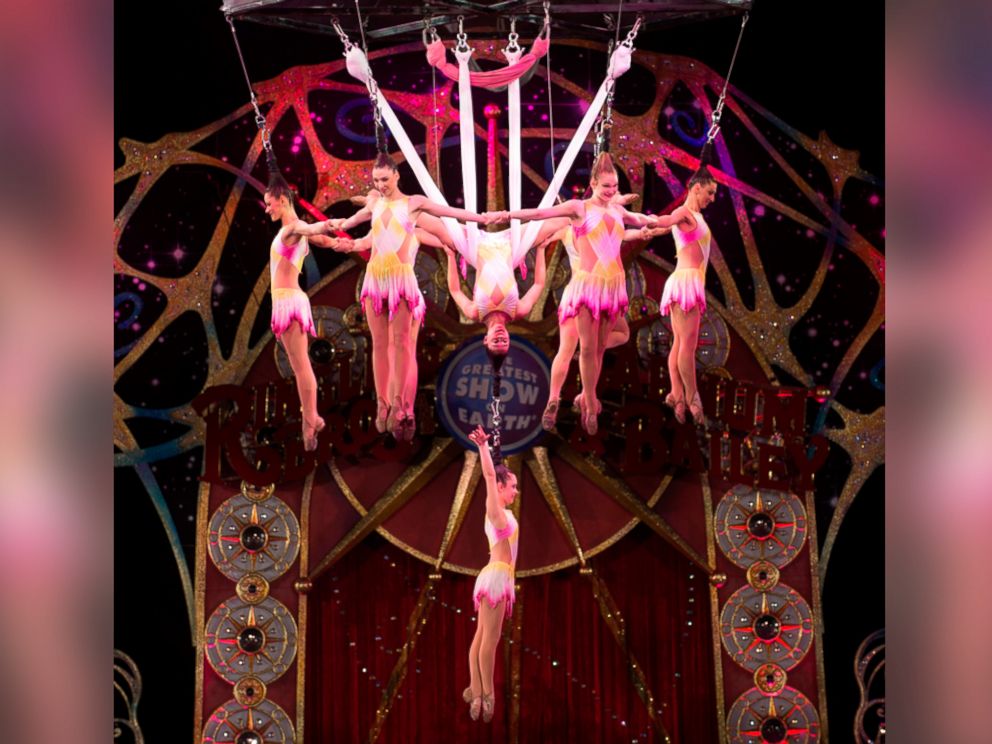What It Takes to Be a Professional Hair-Hanger in the Circus
Perfect braids, wet hair, vitamins and more.
May 5, 2014— -- It takes thick skin – and a strong scalp – to be a professional hair-hanger in the circus.
Their twirling bodies dangle 35 feet in the air, secured to the ceiling by no more than their own braided tresses. It’s an ancient circus feat but no less dangerous, as evident by the accident Sunday in Rhode Island, when a support frame collapsed at a Ringling Bros. and Barnum & Bailey show, sending eight “hairialists” plummeting to the ground.
Circus Acrobats Plunge in Apparatus Collapse, 9 Hospitalized
Circus Audience Thought Accident Was Part of Act
For decades, hair-hangers have struggled to make their performance as safe as possible.
The braid tied to the steel pulleys that lift acrobats into the air is most important, according to Steven Santos of Simply Circus Inc., a circus school in Newton, Mass.
"There's a lot of technique that goes into getting the braids correct, and it's not an easy thing to do," Santos, who has taught hair-hanging classes, told ABCNews.com today. "There are several different braids that are used. Most originated in one circus family or another, and they're very secretive."
Hair is naturally strong, Santos said: One average strand can hold 100 grams of weight.
"If you were to take a piece of copper that's the same thickness as a strand of human hair, they're as strong each other," he said.
Another not-so-secret tip is keeping that hair strong.
Ringling Bros. and Barnum & Bailey says its hair-hangers take daily vitamins and use special shampoo. Flat irons and hair-dryers are off limits, as is brushing locks when wet, according to the circus' website.

In past decades, circus stars have shared a few other secrets.
Former Ringling Bros. star Marguerite Michelle Ayala told the Los Angeles Times in 1990 she relies on vegetables, exercise and lots of liquids to keep her hair in tip-top shape, and shuns hair dye.
As for pain, performers get used to it, she said.
"In the beginning, when I am learning, I feel like when they put really hot water on your hair, boiling water,'' Ayala said in a 1998 interview with The New York Times.
"The spin is the hardest -- your weight doubles. But when you see the faces on the people, you forget the pain.”
Performers say braids hold best when they're wet.
Ayala suffered a scare in 1982, when a cable snapped during at Atlanta show and she fell, cracking her neck. She was in a coma for a week but didn’t leave the circus.
Ayala’s daughter Michelle – hair-hanging is a family affair for the Ayalas – explained to The Philadelphia Inquirer in 1990 how it takes her father 20 to 40 minutes to comb and braid her hair to a hook that latches to a cable, which lifts her into the air.
She said the hair-hangers in her family get a monthly scalp treatment.
Viktoriya Medeiros, one of the acrobats tragically injured Sunday, said in an interview last month her diet keeps her hair strong.
“I drink a lot of vitamins that are good for hair. I eat a lot of eggs and avocado,” she said. “I used to hate avocado, but it’s good for strong hair so now I love it.”




